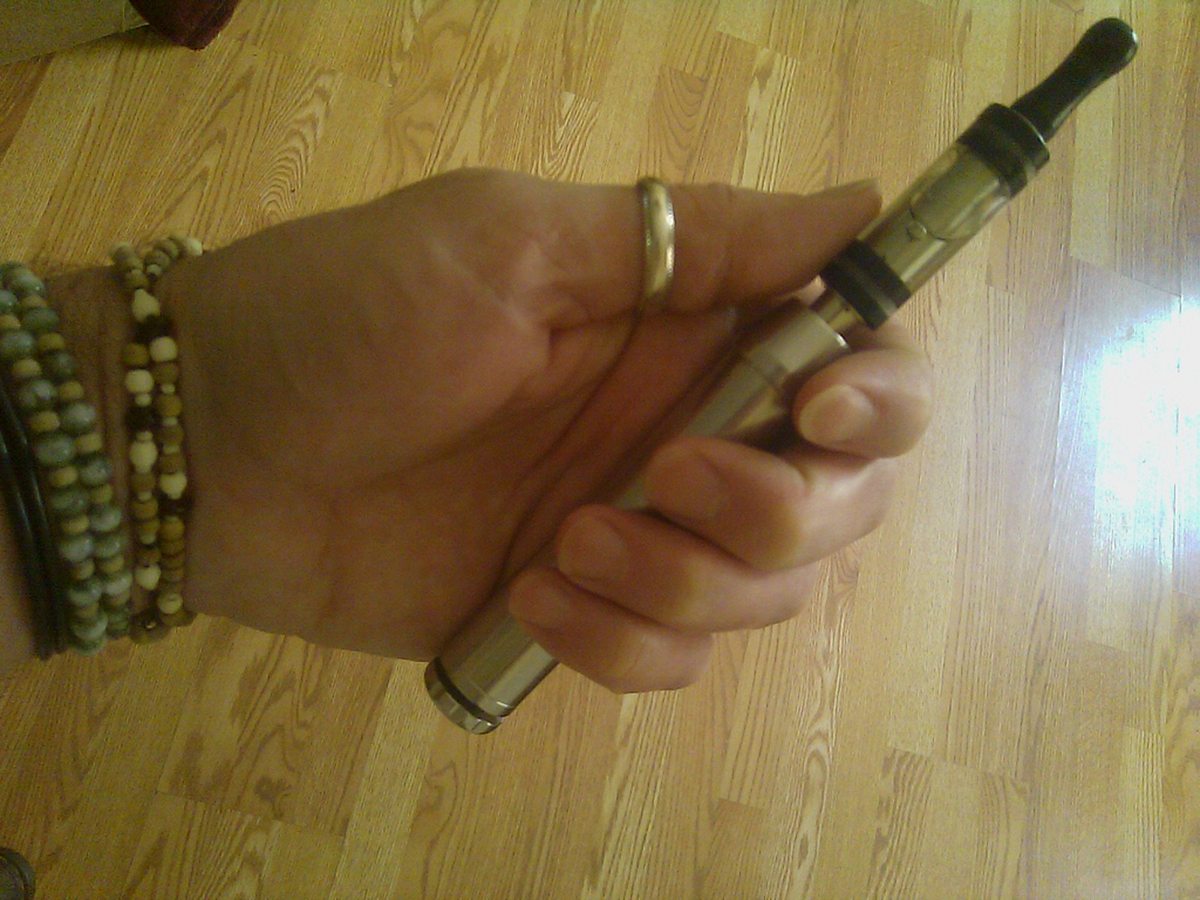Table of Contents
Another danger of e-cigarettes is their contribution to "thirdhand" smoke. The dangers of smoking are direct, in the body of the smoker, from secondhand smoke, which is cigarette smoke or e-cigarette vapors inhaled by someone who is not smoking, and thirdhand smoke, which leaves residues on objects where the smoking takes place.
Thirdhand smoke can actually be a bigger problem than secondhand smoke. Nicotine stays in fabrics exposed to cigarette or e-cigarette smoke for at least 18 months. Natural fabrics retain more nicotine than synthetic fabrics. Cotton absorbs 41 times as much nicotine and 78 times as much of the cancer-causing nitrosamines as polyester. Toddlers absorb nearly seven times as much nicotine from fabrics in rooms where people have smoked than they do from tobacco smoke or e-cigarette smoke itself. Adults absorb 24 times as much nicotine from fabrics as from secondhand smoke. The figures for cancer-causing nitrosamines are even worse. Toddlers absorb 16 times as much of the nitrosamines from fabrics as from second hand smoke, and adults absorb 56 times as much these cancer-causing chemicals.

Given that vaping releases up to 200 times more of certain toxic chemicals as conventional cigarettes, e-cigarettes are even more dangerous than regular cigarettes for children and adults who do not smoke, especially when vaping takes places indoors.
What does all of this mean?
- Contrary to the conventional wisdom, e-cigarettes are not safer than regular cigarettes, especially with regard to nicotine content.
- The toxic effects of e-cigarettes on bystanders are conveyed by nicotine and nitrosamines left on fabric, especially on natural fabrics. It's important to smoke outside, whether you smoke regular cigarettes or e-cigarettes.
- Infants and toddlers have a some protection from the fact that their livers don't yet make enzymes that make certain chemicals in cigarette smoke or e-cigarette smoke even more toxic. However, pregnant women do make these enzymes, and the damage to the developing embryo and fetus is magnified. Exposure either to e-cigarettes or regular e-cigarettes during pregnancy causes lasting problems in brain development in the child.
- Heavy vaping is as likely to lead to lung cancer as heavy cigarette smoking. Despite what advertising says, e-cigarettes are not safe.
If you have quit smoking regular cigarettes and taken up e-cigarettes, you really haven't given up smoking. Not only is your new habit not safe, it is in some ways more dangerous than the habit you gave up. You can reduce the risks for yourself and for people around you, especially teens and young adults, by choosing American- or EU-made products that are labeled as nicotine-free, and by avoiding any product with cherry flavoring. The problem with cherry flavoring is that it contains a chemical called diacetyl, which is implicated in a severe respiratory disease known as bronchiolitis obliterans. The condition is also termed “popcorn lung” because it first appeared in workers who inhaled artificial butter flavor in microwave-popcorn processing facilities.
READ Exposing Ten Little-Known Facts About E-Cigarettes
There are just too many potential downsides to e-cigarettes to recommend them. If you must use them, at least them outside your home, and don't use them around people who already have respiratory conditions.
- Bahl V, Shim HJ, Jacob P 3rd, Dias K, Schick SF, Talbot P. Thirdhand smoke: Chemical dynamics, cytotoxicity, and genotoxicity in outdoor and indoor environments. Toxicol In Vitro. 2015 Dec 10. 32:220-231. doi: 10.1016/j.tiv.2015.12.007. [Epub ahead of print] PMID: 26689327.
- Blair SL, Epstein SA, Nizkorodov SA, Staimer N. A Real-Time Fast-Flow Tube Study of VOC and Particulate Emissions from Electronic, Potentially Reduced-Harm, Conventional, and Reference Cigarettes. Aerosol Sci Technol. 2015. 49(9):816-827. PMID: 26726281,
- Photo courtesy of SteadyHealth
- Photo courtesy of ecigclick: www.flickr.com/photos/ecigclick/15125924422/

